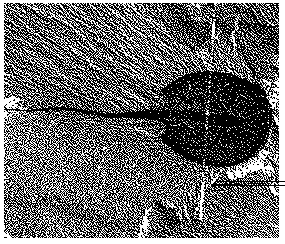 Return
Return
Burgessia

Burgessia
An arthropod whose most ovious characteristic is a large carapace with a long posterior spine. The carapace is convex, almost circular in shape, with a diameter of a dozen or so centimeters (5 in ). The body is divided into segments, contained entirely below the carapace and composed of a cephalic region and a posterior region or trunk. the cephalic portion of the body bears four pairs of appendages, the first pair of which are segmented antennae, while the others each consist of a segmented leg and a small flagellum. The trunk is composed of eight segments, the first seven of which bear biramous appendages consisting of a leg and a gill, whereas the last segment bears simple, uniramous appendages; on the latter segment there is also a long spine.
Note -- The shape of burgessia cannot help but recall that of the living Limulus, a xiphosurid arthropod widespread in modern seas: it is probable that Bugessia, like Limulus, was an inhabitant of the sea floor and used its limbs to move along it; there is less certainty, however, about its ability to swim by moving its gills.
Copyright 1986 by Arnoldo Mondadori Editore S.p.A, Milan
.
 Return
Return
